Michael Laub / Remote Control Productions
Portrait Series Berlin (2007)
PHOTOGRAPHY / VIDEO / CREDITS / PRESS
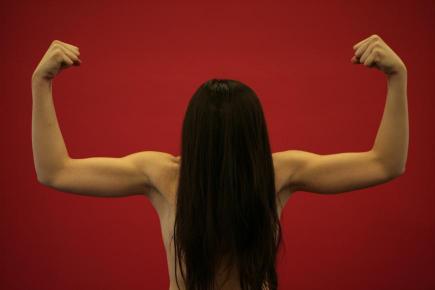
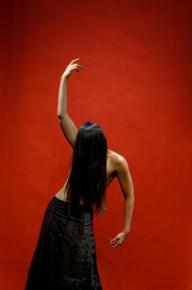
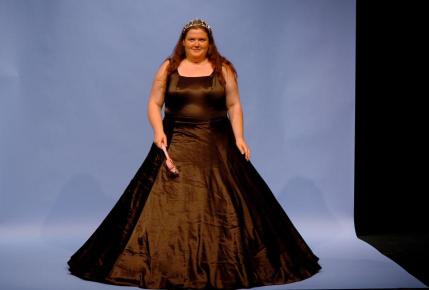
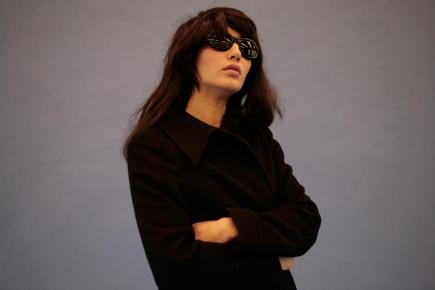
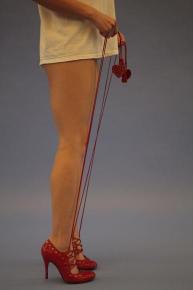
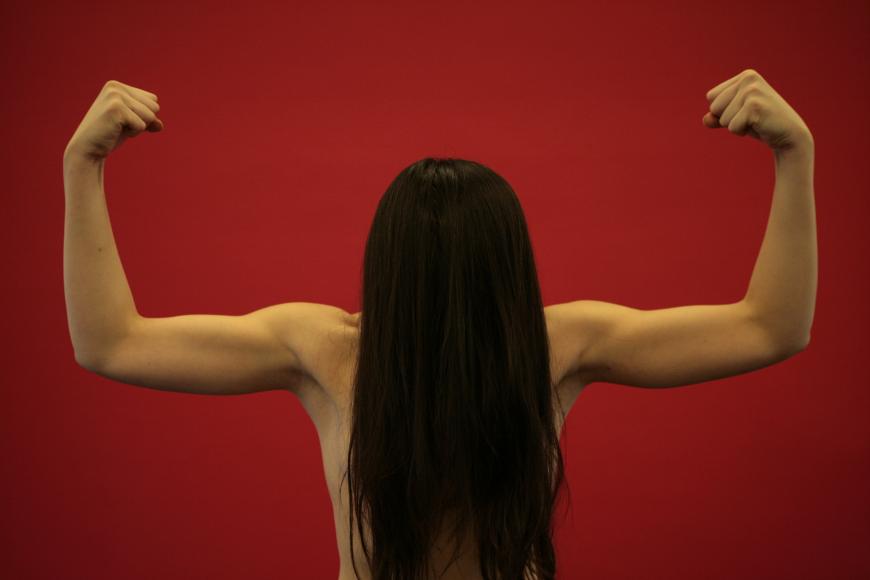
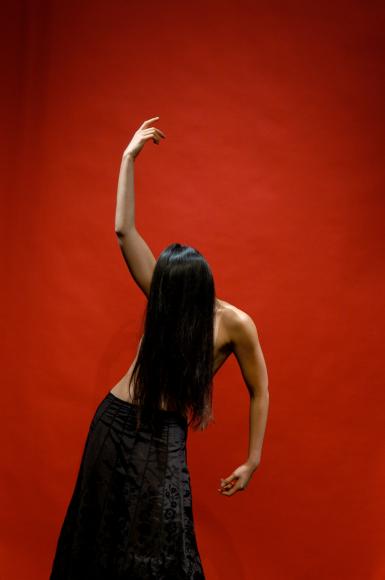
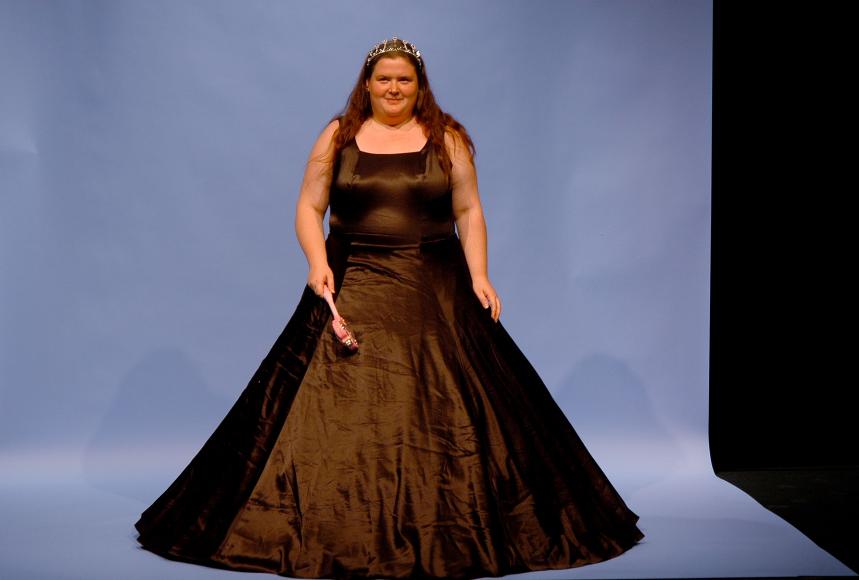
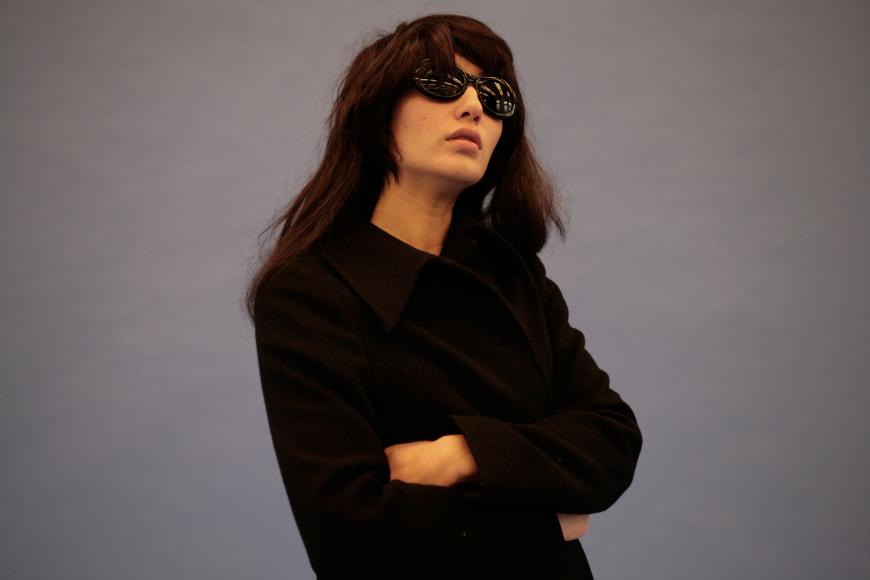
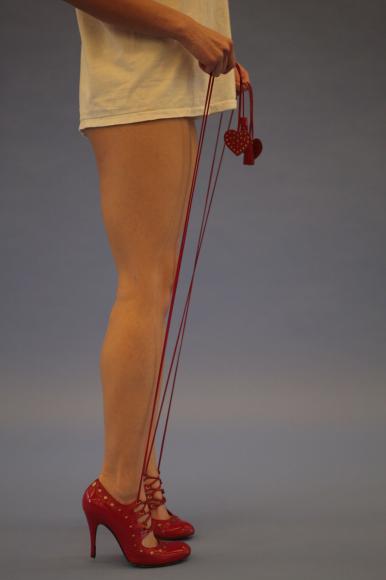
"I don't have biographical documents or records that I could show to you – I mean, I never kept a diary or wrote poems or something like that. I don't even have a camera.But there are certain ticks I have. For instance I don't like to leave the house without handcreme." (Robert Gather)
CREDITS
Concept and Direction: Michael Laub
Dramaturgy: Astrid Endruweit
Music: Larry Steinbachek
Light Design: Nigel Edwards
Sound: Jean Pierre Urbano
Technical Director: Jochen Massar
Production Management: Claudine Profitlich and Inge Zysk
Assistant Director and Production, Textdisplay: Laura Clemens
Performers: Robert Gather, Sonchai Körner, David Malley, Heli Meklin, Asa Odemark, Herma Auguste Wittstock, , I-chen Zuffellato
Co-produktion: Productiehuis Rotterdam (Rotterdamse Schouwburg), Remote Control Productions,
Tanz im August 2007 - Internationales Tanzfest Berlin
Supported by: Berliner
Künstlerprogramm des DAAD, TanzWerkstatt/Kulturprojekte Berlin.
PRESS
Wiebke Huester, FAZ, 22.08.07
Rosy, naked and probably a liar
Michael Laub’s magnificent “Portrait Series / Marching Series” at Tanz im August, Berlin
A barefooted woman wearing a skimpy white fluffy towel comes onto the stage of the romantically dilapidated Sophiensaele in Berlin. If Astrid Endruweit had lived in Hitchcock’s day, that director would have found her ideal to play one of his demonic if minor female characters. The piercing bolts shot from her cornflower-blue eyes send shivers down the spine of an entire audience. Born after Hitchcock’s time, however, she’s been obliged to play lead roles ever since the Belgian director-choreographer Michael Laub discovered her talents for his Remote Control ensemble. His last production was in Rome, a “Biography Remix” showing the life-art of the performance artist Marina Abramovic, and earlier pieces such as “Frankula” and the biographical piece about Danish fabulist Hans Christian Anderesen explored the darker side of Romantic concepts. read more..
In “Portrait Series / Marching Series”, a new two-part work presented at the Berlin Tanz im August festival, Endruweit occupies the keynote scene in an evening presenting the semi-fictional self-portraits of a range of very different people – “professional and nonprofessional dancers”. Endruweit, a crisply and dryly enunciating Circe, tells us about a girlfriend’s holiday job that involved inspecting the pipes underneath a swimming pool. Her friend discovered peepholes in the floor of the pool, and looking through them she often saw swimmers urinating in the water. Since that time, Endruweit announces, the first thing she does when she goes to a swimming pool is to look for the peepholes at the bottom.
This scene gives a fairly accurate description of a common constellation in contemporary post-modern theatre that combines dance, drama and performance and installation. Theatre is just one medium among several, from which consumers hope to receive surprising, scandalous, embarrassing or charming views into other people’s lives. Laub’s great art, however, consists in restoring innocence and charm to this desire, which is not per se wrong or illegitimate. Although the audience is obliged to feel shame for the voyeurism so ironically pointed out to them, it also has a chance to discover truths in the most shameless lies and the most charming of what are presumably fake stories. They are truths that only art can reveal in such snapshots: searchlights trained on our life-realities mixed with fragments of childhood sensations, the reasons why people develop tics, eccentric habits, shynesses and desires. Laub’s “Portrait Series” comes from the same questions and interests as the photographic portraits, enigmatic in their precision, of Rineke Dijkstra or Thomas Ruff.
The choreographer describes as the subjects running through his work the antagonism of naturalism and artistry, the boundaries between acting and being, fiction and reality, intimacy and public exposure, classicism and trash.
What made “Portrait Series / Marching Series” captivating, therefore, was precisely the unspectacular appearances of the dancers and non-dancers, who were all magnificent. The quiet charm with which Robert Gather, Sonchai Körner, David Malley, Heli Meklin, Asa Odermark, I-Chen Zuffellato, Greg Zuccolo and Herma Auguste Wittstock revealed their secrets. Wittstock was the most unsparing in her procedure. This former pupil of Marina Abramovic reduced her audience to voyeurs obliged to feel uneasy because the object of their voyeurism was staring back at them, friendly though her gaze was. In total silence and nudity, the rosy-faced performance artist presented her voluminous girth; there were no distractions and the only justification was her sheer presence. In view of what she had done before, the audience was grateful for the chance of relaxation offered by her later joke that she was christened Herma because everybody in her family is called Hermann, Helga or Herbert.
The clever and witty evening with Laub’s portrait forgers provided some stimulation in the otherwise lukewarm programme of Tanz im August so far, which
opened drearily last weekend with Anne Teresa de Keersmaeker’s Steve Reich medley and Eduard Lock’s failed and excruciatingly boring piece about Tchaikovsky. X close
Arnd Wesemann, ballettanz, 07.07
The Man Who Understands Dancers: Michael Laub
On his “Portrait Series” and the difference from a solo. Interviewed by Arnd Wesemann
“Every photographer and every painter produces portraits. The stage is the only place you don’t seem them. But why not?” asks Michhael Laub, whose inimitably soft but rasping voice sounds reluctant to tolerate the question he poses himself. “So far I’ve only found one answer: Portraits can’t be rehearsed. They can only be produced.” read more..
Portraits can be found, of course, in the world of dance, be the subjects Ulrike Meinhof, Salvador Dali, or Laub’s own depiction of Hans Christian Andersen. The personalities shown are household names, but in fact the audience knows no more about them than the choreographer does. Laub is talking about real portraits of dancers, autobiographical studies, about inviting dancers to sit as “models” much the same way as a photographer does.
And how can a dancer’s self be shown on the stage? The same question is said to have inspired Tom Stromberg, then director of the Hamburg Schauspielhaus, who was determined to show the audience the human being behind the official functions – actress, technician, cleaner. On the drive into Hamburg from the airport, Michael Laub began with the theatre’s chauffeur. To the accompaniment of classical music, he discussed whether the driver found it easier to cry to Sibelius or to Mahler; the former was found to be the more potent tearjerker. During Laub’s first “Portraits 360 Sek” series in 2004, the chauffeur wept on stage. For four-and-a-half minutes of his 360-second portrait.
Tears are one thing, of course, real tears another. And this distinction is precisely what Michael Laub finds so thrilling about portraiture. That the self of his performers always interested him more than whatever they were impersonating became evident already with the fabulous Michael Crane in “Out of Sorts” in 1999, a piece Laub still calls a solo. And the same term might be applied still to Astrid Endruweit’s “Pigg in Hell” of 2000. Four years later, she returned to the stage with “Alone”, talked about her childhood dreams of becoming a ballerina or a folder of pullovers, about growing up in a Berlin street named after the liberation brought by the Red Army, and – she also quoted from “Pigg in Hell”, the piece that established her reputation. This combination of confession and citation transforms the solo into a portrait. But with Michael Laub, it must be said, one can never be sure if everything is the unadulterated truth. The perhaps most dazzling liar and the most splendid “autobiographical” forger is Charlotte Engelkes, who’s worked so much with Laub. He also placed in scene Marina Abramovic, who in “The Biography Remix” brought her life’s work into collision with her own private diaries. A portrait, it must be said, is always a matter of faith. And we should be on the alert for all the winks and nods.
Just how much people like saying “I” word is demonstrated by Michael Laub’s present activities as a tutor – young people are standing in line to be portrayed by him. He’s currently touring the Netherlands, Norway and Germany, inviting students of dance and other subjects to present themselves. His pupils willingly let him arrange, concentrate, accentuate the contradictions. And in the process, so Laub always hopes, the as much as possible of their personalities will come to light in their bodies.
Is that what makes a “portrait” different from a solo, then? “The difference,” says Laub, “is in the quality of honesty.” And what is interesting is not the physical technique or aesthetic effect, but the power that authenticity has to disarm. Talking of Charlotte Engelkes, he says, “Even a lie is good only if delivered honestly.” Is a solo a lie? “No, but there’s too much rehearsing, the dance becomes detached from the dancer, covers him up. The previously rehearsed shows nothing more of the dancer’s vulnerability and insecurity.”
In that regard, he’s thinking more of the working methods of photographers, of the snapshots somebody like Nan Goldin takes on the fringes and subcultural layers of society. Or of the credibility Wolfgang Tilmans grants to his subjects by the excessive focus of his meticulously detailed staging. “Between those two extremes, nothing interests me – not the psycho-drama, not the role, not the mise-en-scène,” but what does rouse his curiosity is “the trivial, for instance a dancer who never leaves home without a tube of hand-cream, which shows you just how dramatically important the cream must be to him. How is it possible to show this detail without psychologizing, and instead accomplish a balance between the attributed importance and the need to cover up? Because, of course, he’s ashamed of his obsession.”
It would be presumptuous to accuse Michael Laub of pursuing philanthropic goals with his portraits. His relationship to dancers is not one of love, but an attempt to fathom their vulnerability, to “discover a dancer’s otherness, strangeness – and to preserve it intact.”
He’s attracted by the secret obsessions of the dancers, the exposed and raw poses and lies, the form on a particular day and the fluctuating moods. Last words from Michael Laub: “A dancer who is utterly obsessed with the shape of her body, who’s permanently anxious about herself, who finds her body by turns too muscular, too fat, too slack, who sits in judgement on herself in the bathroom-mirror every morning, will also handle herself differently each time she goes on stage for a portrait, will feel obliged to accentuate different aspects, to be a stranger to herself. And precisely this quality of being strange is what distinguishes the portrait, and makes it unique compared with the rehearsed delivery and the fuzzy giving up of the self that playing the part which is known as a solo entails.” X close
Michaela Schlagenwerth, Berliner Zeitung, 25./26.08.07
In the Sophiensaele one day earlier we saw Belgian director Michael Laub doing what he does best, namely observing people, underscoring what is special about them, and presenting his figures in such a way that they are naked but not exposed. In “Portrait Series Berlin”, Laub places professionals and nonprofessionals in front of a blue screen and lets them tell the audience strange stories from their lives. One of them is Robert Gather, well-known to Berlin’s dance world as the student who for many years took the tickets at the HAU theatre. Another is Herma Auguste Wittstock, a very obese former student of Marina Abramovic. Wittstock’s performances mainly show her naked body, and for Laub she does the same, resolutely yet sensitively at the same time. Her finest moment sees her as a princess wearing a black dress in which she elegantly pirouettes, enticing magical tones from her magic wand. Even if the end is boring, this demonstration that nobody has to conform with the prevailing princess clichés if they want to be a princess is precisely what Laub does so well.
Programm Theaterspektakel Zürich 2007
Esther Schmidt
In 2002, the outstanding international choreographer and performance artist Michael Laub began working on portraits and self-portraits for the stage. The constancy with which he pursues this topic and the intensity he applies to his exploration has led to a series of very personal and intimate cameos in which the playful lightness yet irritating authenticity of his "performers" irresistibly draws the audience into a confrontation with questions of illusion, reality and performance.
The current portraits with professional and nonprofessional dancers created this spring in Berlin and Rotterdam provide renewed evidence of Michael Laub’s inimitable instinct for the performative force of players. Whether professional or nonprofessional, the seven performers appear in front of a white backdrop and present their wholly individual charisma and presence. The light is ruthless and glaring, they are usually alone and props are scarce. Unprotected, without make-up or costumes, they face their audience and impart private, intimate, witty, trivial and sad information. Some of them move or perform, others are accompanied by their self-made videos.
There’s the young woman of Asian appearance who recounts her “first times” with the earnestness of a child reciting a shopping list – first cigarette, first penis, first declaration of love, first corpse, and so on – and then appears as a lascivious temptress in a “home movie” shot under the shower. Or the blonde Finnish woman who in childhood longed to be a boy, and later so admired Bruce Willis that she practised his smile. Then there’s the corpulent performance artist Herma, who uses her costumes to play through an entire repertoire of female roles – from the virtuous debutante in white over the naked hooker up to the Nana-like earth mother. Or the smart boy who talks about his tics, about his nude poses in the bathroom, about the fact that he can only clean his apartment if his favourite music’s playing. Then we see an over-excited drag queen dancing like a swan gone wild, a super-cool dancer auditioning with a baby tucked under her arm, or a very normal woman who wears two pairs of trousers at once and talks about her most embarrassing moments.
The mixture of biographical material, solemnly delivered intimate confessions, and the personal “home movies” lends the portraits a confusing form of authenticity. How much is self-portrayal, how much a role? And what, exactly, is the difference? What counts as natural, what is stylized? Do the subjects resemble their self-portraits, is that really how they see themselves, or is it the way they’d like to be? This latest portrait series from Michael Laub pursues with almost gruesome perfection the shifting layers of fiction and reality, being and acting, privacy and publicness.
The long-term project was initiated five years ago. At the suggestion of Tom Stromberg, then director of the Deutsches Schauspielhaus in Hamburg, Laub created a first series of “360-second portraits” with actors and employees of that theatre in 2002. Portraits of performance artist Marina Abramovic as well as the Remote Control members Greg Zuccolo and Astrid Endruweit followed in 2004; the Theater Spektakel showed “Alone” – the Endruweit portrait – in the same year. For the current Berlin series, Laub widened the circle of potential performers by advertising for professional and nonprofessional dancers. “Portrait Series Berlin. Professional and Nonprofessional Dancers” premiered at the Tanz im August festival in Berlin in August, and will now be shown at the Theater Spektakel.
Anneriek de Jong, NRC, 18.09.2007
Laub’s sharp stage portraits
They hardly dance or do not dance at all, Michael Laub’s dancers and performers. In the performance Portrait Series they focus on acting and maybe not even that. They apparently are themselves, in front of a white screen and wihout a trace of make-up. Seven young people, one by one tell about their lives. What’s true and what’s real, the audience will never know. Exhibitionism passes into intimacy, kitsch into pure beauty, integrity into sophisticated postures.
Just like in Portraets 360 sek (2002) and Alone/Gregoire (2004) the Belgian-Swiss choreographer Michael Laub wants to paint a portrait of his performers. Earlier he made a portrait of the body-art star Marina Abramovic and the beautiful dancer Astrid Endruweit who he picked up from the street.
He is also able to provoke secrets from non-professional performers, while keeping the secret intact. Because the tics, the obsessions and the memories of the people who Laub puts into the spotlights, always have something strange about them. His portraits makes one think of Nan Goldin’s snapshots or Rineke Dijkstra’s precise photographs.
Not all portraits are successful, but some immediately fascinate. I-Chen Zuffellato hides her face behind long manes and looks spooky. Heli Meklin tells in a funny way who she wanted to resemble when she was a child - especially headbanging hardrockers. Herma Auguste Wittstock appeared naked, completely with a fat apron and a swabbing bosom. On an accompanying video her heavy body for a moment hangs weightless in the air.
Compared to that he finale of the evening was incongruous. In Marching Series Part 1 the dansers parade on the stage in white bathrobes; blood poors from the chest of one of the dansers. This part is more pretentious than the portraits, which just are so good because of their apparent simplicity.
